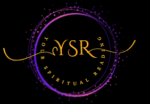The Art of “let it go” in Spirituality
“Let it go” means to release control, attachments, or bad feelings about something in life. It’s about accepting things as they are and moving forward without being sad about the past or worrying about the future. It’s about surrendering to what is, accepting things as they are, and moving forward without being weighed down by past grievances, regrets, or worries about the future..
Have you ever had a heavy feeling from life’s responsibilities? As though you’re straining to keep up with the world’s rapid pace and bearing a heavy load on your shoulders? It’s a typical emotion that most people have felt at some point in their lives. What if I told you there was a way to lessen that burden, though? A method to escape the craziness of life and discover freedom and peace? That’s where spirituality’s art of letting go comes in.
Lets go bit deep and try to understand from our daily life
Let’s start with a simple example from our daily lives. Imagine you’re holding onto a bunch of balloons. Each balloon represents a worry, a fear, or a regret. The more balloons you hold onto, the heavier they become, pulling you down and making it hard to move forward. But what if you were to let go of those balloons, one by one? As each balloon drifts away, you feel lighter, freer, and more at peace. That’s the essence of letting go in spirituality – releasing the things that no longer serve us, so we can soar to new heights.
The concept of “letting go” has deep roots in various spiritual and philosophical traditions around the world. It is often associated with practices such as mindfulness, meditation, and self-awareness, all of which emphasize the importance of releasing attachments and living in the present moment.
Imagine sitting quietly, feeling the warmth of the sun on your face, the soft rustle of leaves in the breeze. In that moment, you’re not weighed down by the past or fretting about the future. You’re simply here, fully alive, fully present. That’s the magic of letting go—it’s not just a concept; it’s a doorway to a deeper, richer experience of being human.
It’s Background and how it is practiced in Different Religions and Beliefs ?
The idea of letting go isn’t some modern concept—it’s been around for ages, passed down through generations, long before smartphones and social media, our ancestors were already exploring the power of letting go.
Our ancient sages sitting under the stars, pondering the mysteries of life. They understood that holding onto things too tightly only brought suffering. So, they began to practice the art of letting go, finding freedom in releasing attachments and embracing the present moment.
In Hinduism, the Bhagavad Gita teaches us to act without attachment to the fruits of our actions. It’s about embracing our dharma, our sacred duty, with selflessness and devotion, knowing that the results are ultimately beyond our control. Through the practice of karma yoga, we learn to surrender our personal agendas and align ourselves with the divine will.
In Christianity, letting go is embodied in the teachings of Jesus Christ, who emphasized forgiveness, compassion, and love. It’s about releasing resentments, judgments, and grievances, and opening our hearts to the transformative power of grace.
In Buddhism, the practice of letting go is central to the path of enlightenment. It’s about relinquishing attachment to desires, outcomes, and the illusion of a separate self. Through mindfulness, meditation, and non-attachment, we awaken to the truth of impermanence and find freedom from suffering.
In Islam, surrendering to the will of Allah is the ultimate act of faith. It’s about trusting in divine providence, even when life’s challenges seem insurmountable. By letting go of our egos and submitting to the wisdom of the divine, we find peace and contentment in the midst of uncertainty.
The practice of letting go is not just a religious or spiritual concept; it’s a lived experience, a path to deeper self-awareness, compassion, and connection.
How to “Let it Go” for a Happier Life
First things first, take a moment to reflect on what’s weighing you down. Is it a grudge you’ve been holding onto? Or maybe it’s a fear that’s been holding you back from taking risks? By identifying these barriers, you’re already one step closer to releasing them.
It’s time to let go of any unresolved grudges and resentments. Anger management simply makes matters worse. Rather, learn to forgive both yourself and other people. Recall that the goal of forgiveness is to release yourself from the control that another person has over your feelings, not to approve of their behavior.
We all do things that don’t help us anymore. Like waiting until the last minute, feeling unsure about ourselves, or saying mean things to ourselves. It’s time to stop doing those things. Instead, find new habits that make you feel good and strong. Start with small changes, and be happy about every little success you have.
The past is behind you, and dwelling on it only robs you of the present moment. Release the grip of painful memories and embrace the healing power of acceptance. Remember, you are not defined by your past; you are defined by how you choose to move forward.
Your happiness in the moment is only stolen when you worry about the future. Consider what you can control at this now rather than worrying about what might happen in the future. Remain anchored in the here and now by engaging in mindfulness exercises. Have faith in your ability to overcome every obstacle that comes your way.
Conclusion:
Congratulations, You’ve taken the first steps on your journey to a happier life by embracing the art of letting go. Remember, happiness is not found in holding on but in releasing what no longer serves you. So keep letting go, keep growing, and keep shining bright. Your happiness awaits!
